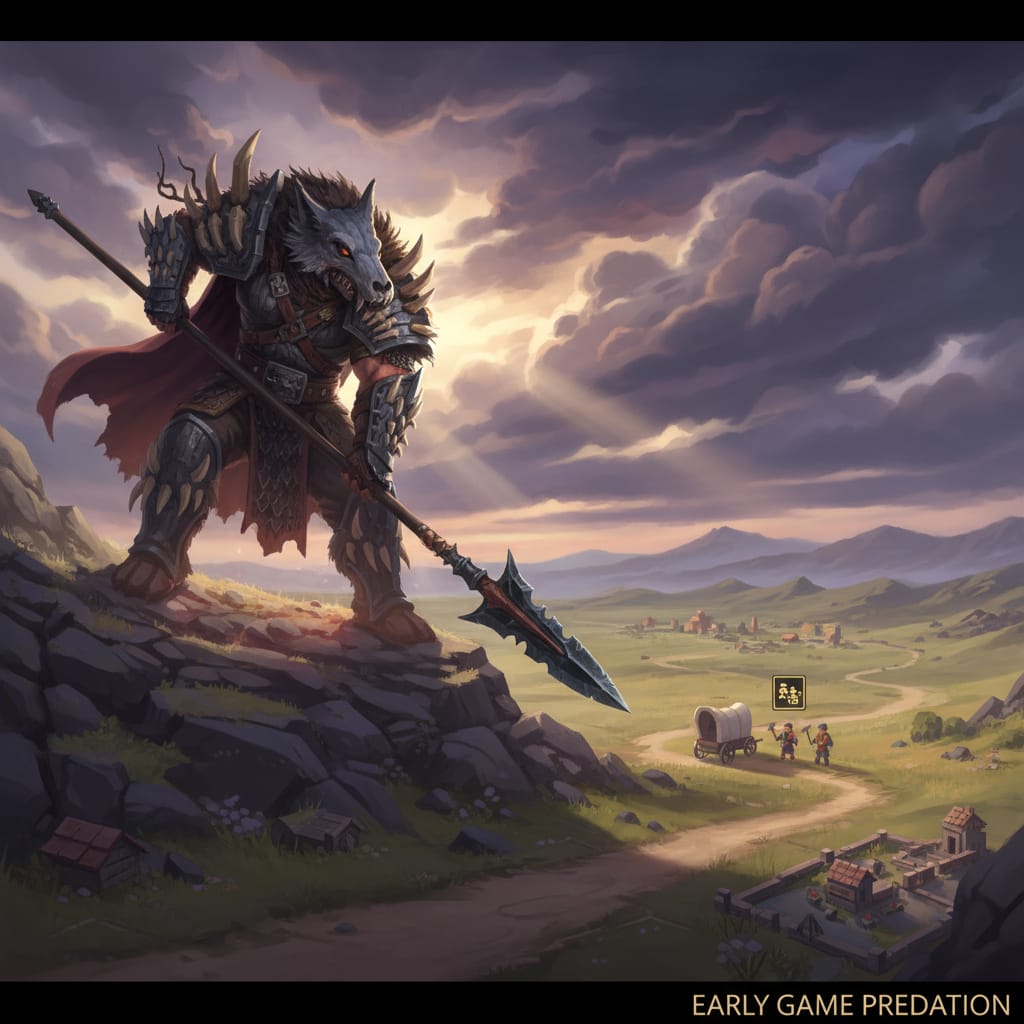In the grand tapestry of Civilization 6 strategy, the anti-cavalry unit line serves a clear and present purpose: to be the unyielding wall against which the thundering charge of knights and tanks breaks. The Spearman, a unit available from the dawn of history, is the first and most iconic representation of this role—a simple, cost-effective counter. But consider a fundamental shift in the laws of digital warfare. What if this specialized defensive unit gained a new, predatory offensive capability? This analysis explores a single, game-altering hypothetical: what if every anti-cavalry unit, from the humble Spearman to the advanced Modern AT, dealt its significant bonus damage not just to heavy cavalry, but to all civilian units?
The consequences of such a change would be nothing short of revolutionary. It would fundamentally rewrite the strategic handbooks for every era, transforming a primarily reactive unit class into a proactive tool of economic, cultural, and expansionist sabotage. The player community frequently discusses how to optimize early expansion or protect trade routes; this change would force those discussions into a new, far more militaristic framework. The entire rhythm of the game would change, slowing the pace of peaceful expansion to a crawl and elevating early-game aggression from a viable option to a near-necessity.
The New Apex Predator: Redefining the Anti-Cavalry Role
To fully grasp the magnitude of this change, we must first define the units involved. The targets would be the soft underbelly of any civilization: Settlers, Builders, Traders, and all religious units (Missionaries, Apostles, Inquisitors, Gurus). In the later game, this vulnerability would extend to Archaeologists and Naturalists, the key pieces for a Cultural Victory.
The predators would be the entire anti-cavalry line:
* Spearman (Ancient Era)
* Pikeman (Medieval Era)
* Pike and Shot (Renaissance Era)
* AT Crew (Modern Era)
* Modern AT (Atomic Era)
With their inherent combat bonus, these units would likely be able to destroy a civilian unit in a single attack, even when facing a defensive terrain penalty. This transforms them from “cavalry-killers” into “civilian-hunters.” Their strategic value skyrockets. No longer are they built merely in anticipation of an enemy’s cavalry; they are now built to actively dismantle an opponent’s civilization from the inside out.
Early Game Dominance: The Era of the Spearman
Analysis on strategy forums consistently highlights the first 100 turns as the most critical phase of the game. In this new reality, the Spearman becomes the undisputed king of the early game map.
Settler Escorts Become Non-Negotiable
Currently, sending a lone Settler to a pre-scouted location is a calculated risk. With this change, it becomes strategic suicide. A single enemy Spearman, costing a mere 65 production, could fortify on a hill or in a forest and establish a kill zone, instantly deleting any undefended Settler that wanders into its path.
The strategic calculus would shift entirely. The concept of the “naked Settler” would vanish from the lexicon. Player guides would be rewritten to emphasize a new doctrine: the mandatory military escort. A Settler would need to be accompanied by at least one, and often two, military units like a Warrior or Slinger. This has cascading effects:
* Slower Expansion: The production cost of settling a new city effectively doubles or triples. The need to produce military escorts directly competes with producing the Settler itself, as well as essential early infrastructure like Monuments and Granaries.
* Increased Risk: Even with an escort, a cleverly positioned enemy could potentially strike the Settler first. This would force players into slow, cautious, formation-based movement across the map, treating every tile of fog of war as a potential ambush site.
* Buff to Defensive Civs: Civilizations that excel at early defense or have unique early units, like Rome with its Legions or Sumeria with its War-Carts, would have a distinct advantage in protecting their own expansion while projecting this new threat onto others.
Economic Warfare from Turn 20
The Builder, the engine of early empire development, becomes a primary target. Many professional gamers suggest that the key to an early lead is rapidly improving luxury and strategic resources. A Spearman-turned-predator makes this a perilous task.
A player could invest in a couple of Spearmen instead of a Scout and use them not for exploration, but for active harassment. These “Builder-snipers” could patrol an opponent’s borders, pouncing on any Builder that strays too far from the capital. The impact is devastating:
* Delayed Improvements: Losing a Builder means a direct loss of 50 production and, more importantly, a delay in improving tiles. This can postpone the “Eureka!” moments for crucial early technologies like Archery or Bronze Working.
* Wonder Rushes Crippled: A civilization attempting an early Wonder like the Pyramids or Stonehenge relies on multiple Builder charges. The constant threat of losing those Builders would make such strategies incredibly risky without a dedicated military screen.
* The Aztec Advantage: Montezuma’s ability to capture enemy Builders with his Eagle Warriors is already strong. Community analysis suggests that in this new meta, the Aztecs would become a top-tier terror. A raiding party of an Eagle Warrior and a Spearman would be unstoppable, with the Spearman deleting the Builder’s military escort (if any) or the Builder itself, allowing the Eagle Warrior to claim the prize.
Commerce and Conversion Under Siege: The Mid-Game Shift
As empires mature and enter the Medieval and Renaissance eras, the threat evolves. The Pikeman and the Pike and Shot unit inherit the mantle of the civilian-hunter, and their targets become even more lucrative.
The Death of the Unprotected Trade Route
Traders are the lifeblood of a thriving economy, generating gold, food, and production, as well as establishing crucial trading posts. In our hypothetical scenario, they become glowing, high-value targets. A single Pikeman, and later the more powerful Pike and Shot, could fortify on a key tile—a river crossing, a mountain pass, a coastal chokepoint—and effectively shut down an entire trade network.
This would necessitate a complete rethinking of commercial strategy:
* Escorting Caravans: Just as Settlers need escorts, Traders would require their own protection. The irony is that the best unit to hunt down a marauding Pikeman is a Knight—the very unit the Pikeman is designed to counter. This creates a fascinating scissors-paper-rock dynamic where players must build cavalry specifically to protect their economy from anti-cavalry raiders.
* The Power of Policy: Policy cards like Raid and Privateer would become exceptionally powerful. A successful plunder of a Trader by a Pikeman would yield not just a disrupted trade route but also a significant bounty of Gold, Science, and Culture.
* Geographic Importance: Maps with natural chokepoints would become far more contentious. Controlling a narrow isthmus or a single mountain pass would mean the ability to strangle your neighbor’s economy with a single, well-placed anti-cavalry unit.
A New Crusade: Military vs. Faith
Perhaps the most profound mid-game impact would be on religious gameplay. Religious units are, by definition, non-combatants. Making them vulnerable to anti-cavalry units would turn the struggle for faith into a true holy war.
Many players argue that religious combat can feel divorced from the military aspect of the game. This change would fuse them completely.
* Vulnerable Missionaries: A player attempting to spread their religion would have to mount a full-scale expedition. A wave of Missionaries and Apostles could be wiped out by a handful of strategically placed Pikemen long before they reach their target cities.
* The Inquisitor’s Dilemma: Inquisitors, designed to defend a player’s faith on home soil, would be helpless. An enemy could simply march a Pike and Shot unit into your territory and eliminate your religious defenses before sending in their own Apostles to convert your cities.
* Buff to Religious-Military Civs: Civilizations like Spain and Byzantium, which already integrate military and religious combat, would become dominant. Spain’s Conquistadors, when adjacent to a religious unit, could help clear the path for that unit to survive. Byzantium’s ability to spread its religion upon defeating enemy units would synergize perfectly with this new reality, as their cavalry could hunt down the anti-cavalry units that threaten their faith. A popular strategy would be to declare a Holy War, using the Casus Belli to militarily obliterate an opponent’s religious infrastructure.
Late-Game Victory Conditions: A Perilous Path
In the final eras of the game, the stakes get even higher. The AT Crew and Modern AT are powerful defensive units, but their new role as civilian-hunters would allow them to directly sabotage an opponent’s path to victory.
Sabotaging the Cultural Victory
The Cultural Victory in the late game hinges on two key civilian units: the Archaeologist and the Naturalist. Both are expensive, take time to create, and must travel deep into potentially hostile territory. This makes them prime targets.
- Archaeological Insecurity: An Archaeologist attempting to excavate an Artifact in a remote location or in a rival’s territory would be a sitting duck. An enemy could easily see the excavation site appear and dispatch an AT Crew to eliminate the Archaeologist before the work is complete. This would force players pursuing a Cultural Victory to first establish military supremacy over dig sites.
- National Park Denial: Creating a National Park with a Naturalist requires a very specific diamond-shaped tile arrangement and for all four tiles to be owned by the same city. It is an intricate and visible process. A rival player could preemptively move a Modern AT unit into the planned park area, making it impossible for the Naturalist to even be activated. This form of “victory denial” would become a primary late-game strategy.
Defensive Metagame Adjustments: How to Survive the Hunt
Surviving in this brutal new world would require a complete overhaul of defensive and logistical thinking. A new set of unwritten rules would emerge, taught by bitter experience and shared on community forums.
- The “Paired Unit” Doctrine: The most fundamental rule would be that no civilian ever moves alone. Every Settler, Builder, and Trader would be paired with a military unit, moving in lockstep.
- Zone of Control Mastery: The Zone of Control (ZoC) exerted by military units would become exponentially more important. Players would learn to create “safe corridors” for their civilians by positioning units in a checkerboard pattern, using their ZoC to prevent enemy anti-cav units from slipping through.
- The Rise of the Counter-Hunter: As mentioned, cavalry would see a resurgence in value. Light and heavy cavalry units, with their superior movement, would become essential for scouting ahead and actively hunting down the enemy’s anti-cavalry predators before they can strike.
- Fortifications as Safe Havens: The humble Fort, and later the Great Wall, would become vital. A chain of forts along a key route could provide safe havens for civilian units to garrison and heal, creating a secure logistical network across a sprawling empire.
In conclusion, the simple act of allowing anti-cavalry units to deal bonus damage to civilians would send seismic shocks through every system in Civilization 6. It would transform the game’s pacing, strategic priorities, and the very definition of warfare. The anti-cavalry line would be elevated from a niche defensive role to a versatile and terrifyingly effective offensive weapon. This change would forge a more demanding and unforgiving strategic environment, where economic prosperity, cultural achievement, and religious fervor could only be achieved under the watchful protection of a powerful military. The spear would become as mighty as the sword, not for the armies it could defeat, but for the civilizations it could silently and efficiently dismantle.


